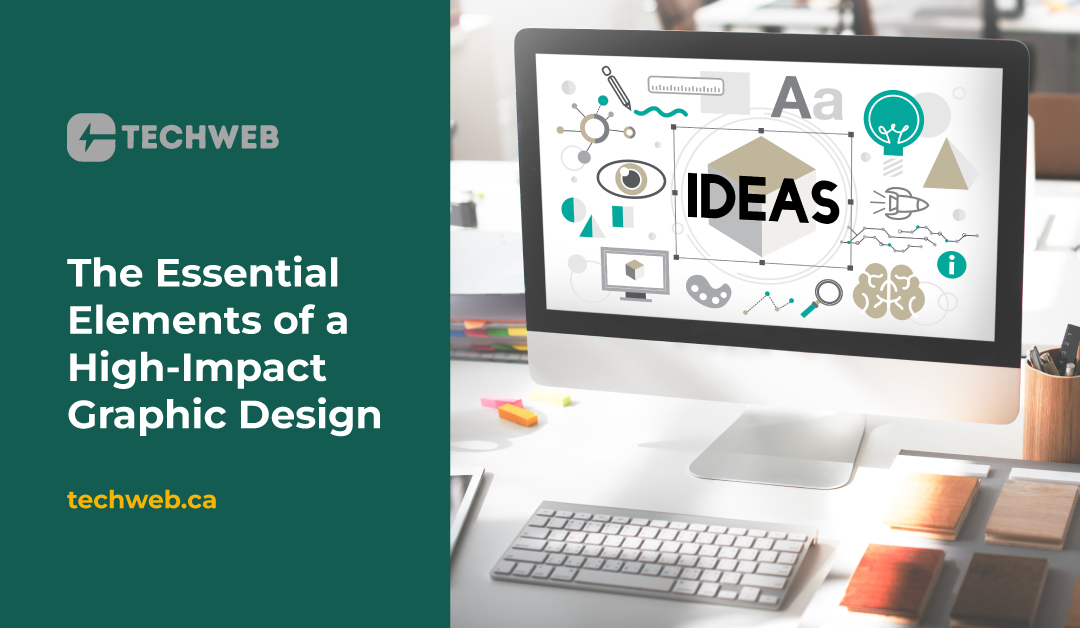Here, we’ll explore the essential elements that contribute to a compelling and effective graphic design.
1. Purpose and Audience Understanding
Before diving into design, it’s vital to have a clear understanding of the purpose behind the project and the target audience. Whether the design is for marketing materials, a website, or a social media campaign, knowing what you want to achieve and who you’re speaking to will guide every design decision. A high-impact design addresses the needs, preferences, and pin points of its audience, ensuring that the message is not only seen but also understood and remembered.
2. Balance and Alignment
Balance in graphic design refers to the distribution of visual elements, creating a sense of harmony and stability. This can be achieved through symmetry (where elements are evenly distributed) or asymmetry (where elements of varying sizes and weights are used to create a dynamic yet balanced layout). Alignment ensures that elements are positioned in a way that guides the viewer’s eye naturally across the design, enhancing readability and flow. A well-balanced and aligned design feels organized and professional, making it more appealing to the viewer.
3. Color and Contrast
Color is one of the most powerful tools in a designer’s arsenal. It can evoke emotions, convey messages, and even influence decisions. The right color palette can enhance brand recognition and create a mood that aligns with the design’s purpose. Contrast, on the other hand, is essential for making elements stand out. It involves using differences in color, size, shape, and texture to highlight key areas of the design, ensuring that the most important information catches the viewer’s attention.
4. Typography
Typography is more than just choosing a font; it’s about creating a hierarchy that guides the viewer through the content. A high-impact design uses typography to emphasize important information, making it easy to read and digest. The choice of font, size, spacing, and weight all contribute to the overall feel of the design. Combining different typefaces can add interest, but it’s essential to maintain consistency to avoid a cluttered or confusing look.
5. Imagery and Icons
Images and icons are powerful elements that can convey complex ideas quickly and effectively. In high-impact graphic design, imagery should be relevant, high-quality, and aligned with the brand’s identity. Whether using photographs, illustrations, or icons, these elements should enhance the message rather than distract from it. Icons, in particular, are useful for simplifying information and guiding users through the design, especially in digital interfaces.
6. Whitespace
Whitespace, or negative space, is the empty space around elements in a design. It might seem counterintuitive, but whitespace is crucial for creating a clean, organized, and professional look. It helps to prevent the design from feeling cluttered, allowing the content to breathe and the viewer’s eye to focus on the most important elements. Effective use of whitespace can also add a sense of elegance and sophistication to the design.
7. Consistency
Consistency is key in graphic design, particularly when working with branding. Consistent use of colors, fonts, imagery, and layout creates a cohesive look that strengthens brand identity and builds trust with the audience. Inconsistencies can confuse viewers and dilute the impact of the design. A high-impact graphic design maintains consistency across all elements, ensuring that the message is clear and unified.
8. User Experience (UX)
In today’s digital age, graphic design is often closely tied to user experience (UX). A high-impact design doesn’t just look good; it functions well too. This means considering how the design will be interacted with, whether it’s a website, app, or digital ad. The design should be intuitive, guiding users effortlessly toward the desired action. Attention to UX ensures that the design is not only visually appealing but also practical and user-friendly.
Conclusion
High-impact graphic design is a thoughtful blend of aesthetics and functionality. By understanding the purpose and audience, and carefully considering elements like balance, color, typography, and user experience, designers can create visuals that are not only beautiful but also effective in communicating their message. When these elements come together harmoniously, the result is a powerful design that leaves a lasting impression

